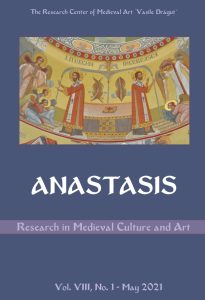Anatomical States – Between Pathology And Visual Expressiveness
Anatomical States – Between Pathology And Visual Expressiveness
Author(s): Cezarina Florina CaloianSubject(s): Visual Arts, Health and medicine and law, History of Art
Published by: Editura ARTES
Keywords: visual art; the human body; disease; facial expression; suffering; drama; artistic creation; the limits of the body;
Summary/Abstract: The topic of the article Anatomical states – between pathology and visual expressiveness may be further approached from several perspectives: the disease itself, transposed into images in various works of art as a symbol of human suffering, from the perspective of medical illustration or the rendition of medical acts, but also from the perspective of the suffering artists, who depicted their physical or mental traumas in their own paintings. In art, there are several recurring themes centred on the human body, such as: the death of the body versus the immortality of the soul, the young body as a symbol of beauty versus the aged body, the ability to control one’s own body, self-preservation and survival instincts, the fight against disease, addictions and their impact on a person’s health and state of mind. The article discusses facets of the disease as well as visions of the human body captured in the visual arts, from the theme of the Danse Macabre in the Middle Ages to Dr. Tulp’s Anatomy Lesson by Rembrandt or the aesthetic vision of Egon Schiele. Another topic approached is the correlation between emotional states and body attitudes or visual metaphors, by using art as a way to exorcise inner demons, in the conception of Van Gogh, Frida Kahlo or Käthe Kollwitz, or to test the limits of the human body, like in the works of Marina Abramovic.
Journal: Anastasis Research in Medieval Culture and Art
- Issue Year: VIII/2021
- Issue No: 1
- Page Range: 207-222
- Page Count: 16
- Language: English

